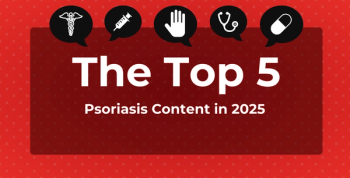
HHS Issues Guide to Reducing Long-term Opioid Use Without Harming Patients in Chronic Pain
In an effort to educate clinicians about the issue of forcing patients in pain to suddenly halt opioid use, HHS released a guide that emphasizes patient-centered care and recommends against a rapid taper or stopping opioids all at once, while a patient living with chronic pain both welcomed the guide and expressed concern.
In an effort to educate clinicians about the issue of forcing pain patients to stop taking opioids, HHS released a guide that emphasizes patient-centered care and recommends against a rapid taper or stopping opioids all at once.
The
Over the past few years, patients with pain who are using opioids, but not addicted to them, have voiced frustrations that they were being treated unfairly by clinicians and health systems ever since the 2016 release of guidelines from the CDC aimed at primary care doctors for safe opioid prescribing. Patients living with chronic pain reported that they were being denied medication that allowed them to function. Even doctors who care
In the wake of what is now thought to be a wave of
The document released Thursday emphasizes that the CDC guidelines does not recommend opioid discontinuation when benefits of opioids outweigh risks. It also warned against interpreting dosage thresholds in the 2016 document as mandatory upper limits.
HHS also suggests prescribing naloxone, pointing out that there is an increased risk for overdose for patients who move to a lower dose, lose their tolerance, and then suddenly return to their original, higher dose. If patients are tapered, there needs to be a collaborative process between the provider and patient, and nonopioid pain therapies should be included, HHS said.
In an article
Tapering should be slow, and clinicians should not abandon their patients, the authors said. “While evidence on the effectiveness and safety of different strategies to reduce opioid dosage is limited, emerging data suggest that when there is a decision to reduce opioid dosage, certain practices, including integration of nonpharmacologic pain management, behavioral support, and slower tapers, may improve outcomes,” they wrote.
Anne Fuqua, a former registered nurse who began advocating for patients in chronic pain after she had a forced taper, said in correspondence with The American Journal of Managed Care® that she has concerns about the document not going far enough to protect patients such as herself.
“I was really pleased to see the clear warnings against rapid taper and rigid application of the dosage thresholds in the CDC Guidelines along with the acknowledgement of the resulting risk for serious harm and even death associated with these practices. That said, I don’t believe the strategy proposed here will be efficacious in achieving their stated goal—protecting patients,” said Fuqua, who has a neurological condition called primary generalized dystonia as well as arachnoiditis, and said she functions on 1000 morphine milligram equivalents (MME) per day.
While the CDC, citing various studies, says that higher doses of opioids have not been shown to reduce pain over the long term and says that overdose risks double at doses at or above 50 MME per day, Fuqua said that HHS should articulate more clearly cases where the benefit of long-term opioid use does outweigh the risk, especially if they discuss situations where the benefit does not outweigh the risk.
“It seems crazy to me at times to be on this much, but my life is dramatically improved. If they truly want to protect patients in general along with the outliers like myself, the document needs to reflect their acknowledgment of the wide variance in response to opioids,” said Fuqua, who said she is not advocating that anyone be on dosages as high as hers.
Fuqua, who has been compiling a list of suicides and sudden deaths after forced tapering—more than 400 so far—said she has concerns that the HHS guidance will be difficult to implement in the real world, given that many payers have adopted the 2016 voluntary guidelines, and that doctors’ prescribing patterns are watched by the Drug Enforcement Agency and the National Committee for Quality Assurance.
References
1. Dowell D, Compton WM, Giroir BP. Patient-centered reduction or discontinuation of long-term opioid analgesics: the HHS guide for clinicians [published online October 10, 2019]. JAMA. doi:10.1001/jama.2019.16409
Newsletter
Stay ahead of policy, cost, and value—subscribe to AJMC for expert insights at the intersection of clinical care and health economics.








































